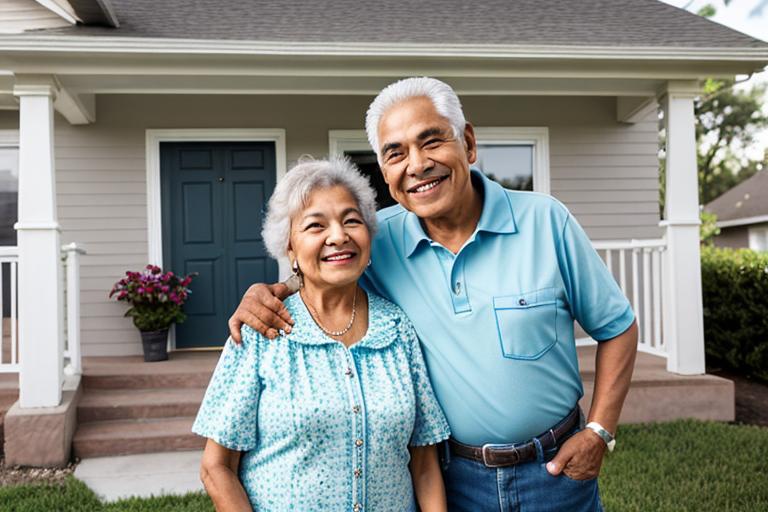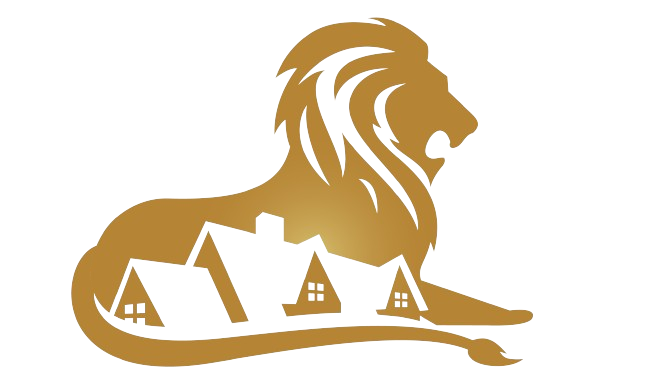
How Does a Reverse Mortgage Work – Your Financial Freedom
As seniors in New York explore avenues for securing financial stability during retirement, one option that often surfaces is the reverse mortgage. Yet, amidst the allure of tapping into home equity without monthly repayments, many individuals grapple with understanding the intricacies of this financial tool. In this comprehensive guide, we embark on a journey to demystify the question: “How does a reverse mortgage work?” By delving into the mechanics, eligibility criteria, benefits, and potential pitfalls, we aim to equip readers with the knowledge needed to make informed decisions regarding their financial future.
Verify my mortgage eligibility (May 11th, 2024)Understanding the Basics of Reverse Mortgages:
At its essence, a reverse mortgage represents a loan against the equity of one’s home, designed specifically for homeowners aged 62 and above. Unlike traditional mortgages where borrowers make monthly payments to the lender, reverse mortgages offer a unique proposition: recipients receive payments from the lender, effectively converting a portion of their home equity into cash. But how does this mechanism operate in practice?
Verify my Reverse Mortgage eligibility!
How Does a Reverse Mortgage Work?
To comprehend the inner workings of a reverse mortgage, it’s essential to grasp the fundamental principles governing its functionality. When a homeowner opts for a reverse mortgage, they essentially borrow against the value of their home while retaining ownership and the right to reside in the property. Unlike a conventional loan, where repayment is expected on a regular basis, the repayment of a reverse mortgage is deferred until the borrower no longer occupies the home as their primary residence.
One of the primary determinants of the loan amount is the borrower’s age, with older individuals typically eligible for larger sums. Additionally, factors such as the appraised value of the property and prevailing interest rates influence the total amount that can be borrowed. Upon securing a reverse mortgage, borrowers have the flexibility to receive payments in various formats, including a lump sum, periodic installments, or a line of credit.
Verify my mortgage eligibility (May 11th, 2024)Eligibility Criteria and Process:

While the concept of accessing home equity without monthly repayments may seem appealing, not all seniors are eligible for reverse mortgages. To qualify for this financial instrument, individuals must meet certain criteria set forth by lenders and government agencies. In New York, as elsewhere in the United States, eligibility hinges on several key factors:
- Age Requirement: Applicants must be aged 62 or older to qualify for a reverse mortgage. This age threshold ensures that individuals have reached retirement age and are eligible to access this particular financial product.
- Homeownership Status: Reverse mortgages are exclusively available to homeowners who occupy their properties as primary residences. Second homes or investment properties do not qualify for this type of loan.
- Equity Position: Lenders assess the amount of equity a homeowner possesses in their property to determine eligibility for a reverse mortgage. Generally, individuals with a significant equity stake are more likely to qualify for larger loan amounts.
- Financial Assessment: While traditional mortgages often involve rigorous financial scrutiny of the borrower’s income and credit history, reverse mortgages place greater emphasis on the value of the collateral - the home itself. However, lenders may still conduct a financial assessment to ensure that borrowers have the means to meet ongoing obligations, such as property taxes and homeowners insurance.
The process of obtaining a reverse mortgage typically unfolds in several stages, each aimed at ensuring clarity and transparency for the borrower:
Verify my mortgage eligibility (May 11th, 2024)- Consultation: Before proceeding with a reverse mortgage application, homeowners are encouraged to seek guidance from qualified financial counselors or reverse mortgage specialists. These consultations provide an opportunity for individuals to gain a comprehensive understanding of the product and its implications for their financial well-being.
- Application Submission: Once individuals have decided to pursue a reverse mortgage, they must submit an application to the lender of their choice. This application will include pertinent information about the borrower, the property, and the desired loan terms.
- Financial Evaluation: Upon receiving the application, lenders conduct a thorough assessment of the property’s value, the borrower’s equity position, and other relevant financial factors. This evaluation helps determine the maximum loan amount for which the borrower qualifies.
- Closing: After the completion of the financial evaluation and any necessary documentation, the reverse mortgage undergoes a closing process akin to that of a traditional mortgage. During the closing, the borrower signs the necessary legal documents, and the loan funds are disbursed.
Verify my Reverse Mortgage eligibility!
Weighing the Pros and Cons:
As with any financial decision, it’s imperative for seniors contemplating a reverse mortgage to carefully weigh the advantages and disadvantages before proceeding. While this financial tool offers numerous benefits, it also presents certain risks and considerations that warrant thoughtful deliberation.
Pros:
- Supplemental Income: For retirees facing financial constraints or seeking to enhance their standard of living, a reverse mortgage can serve as a valuable source of supplemental income. The funds obtained through a reverse mortgage can be used to cover living expenses, healthcare costs, home renovations, or other discretionary expenses.
- No Monthly Payments: Unlike traditional mortgages or home equity loans, reverse mortgages do not require borrowers to make monthly repayments. This feature alleviates the burden of ongoing financial obligations and provides retirees with greater flexibility in managing their cash flow.
- Retained Ownership: Contrary to popular misconceptions, opting for a reverse mortgage does not entail relinquishing ownership of one’s home. Borrowers retain title to the property and can continue to reside in it as long as they adhere to the terms of the loan agreement.
- Non-Recourse Loan: Reverse mortgages are classified as non-recourse loans, meaning that borrowers are not personally liable for any shortfall in repayment if the loan balance exceeds the property’s value upon maturity. This safeguard protects borrowers and their heirs from incurring additional debt in the event of a housing market downturn.
Cons:
- Accrued Interest: While reverse mortgages offer the benefit of deferred repayment, the accrual of interest over time can significantly increase the total amount owed. As interest compounds on the outstanding loan balance, borrowers may find that their home equity diminishes more rapidly than anticipated.
- Impact on Inheritance: Proceeds from a reverse mortgage are typically repaid from the sale of the home upon the borrower’s death or relocation to a long-term care facility. Consequently, the loan repayment may reduce the inheritance received by heirs, potentially impacting their financial legacy.
- Mandatory Obligations: Despite the absence of monthly payments, borrowers remain responsible for certain mandatory obligations, such as property taxes, homeowners insurance, and maintenance expenses. Failure to fulfill these requirements could result in default and subsequent foreclosure.
- Complexities and Fees: Reverse mortgages entail a complex array of terms, conditions, and fees that borrowers must navigate. From origination fees and closing costs to mortgage insurance premiums and servicing fees, the cumulative expenses associated with a reverse mortgage can erode a significant portion of the loan proceeds.
Verify my Reverse Mortgage eligibility!
Conclusion:
In conclusion, the question of “how does a reverse mortgage work?” encompasses a multifaceted exploration of financial mechanisms, eligibility criteria, and potential outcomes. For seniors in New York and beyond, understanding the intricacies of reverse mortgages is paramount to making informed decisions about their retirement finances. While this financial tool offers the promise of accessing home equity without monthly repayments, it also carries inherent risks and complexities that demand careful consideration.
By weighing the pros and cons, seeking guidance from qualified professionals, and conducting thorough due diligence, seniors can navigate the landscape of reverse mortgages with confidence and clarity. Whether used to supplement retirement income, fund healthcare expenses, or enhance quality of life, a reverse mortgage can serve as a valuable component of a comprehensive financial plan.
Ultimately, the decision to pursue a reverse mortgage should align with one’s individual circumstances, and goals.
